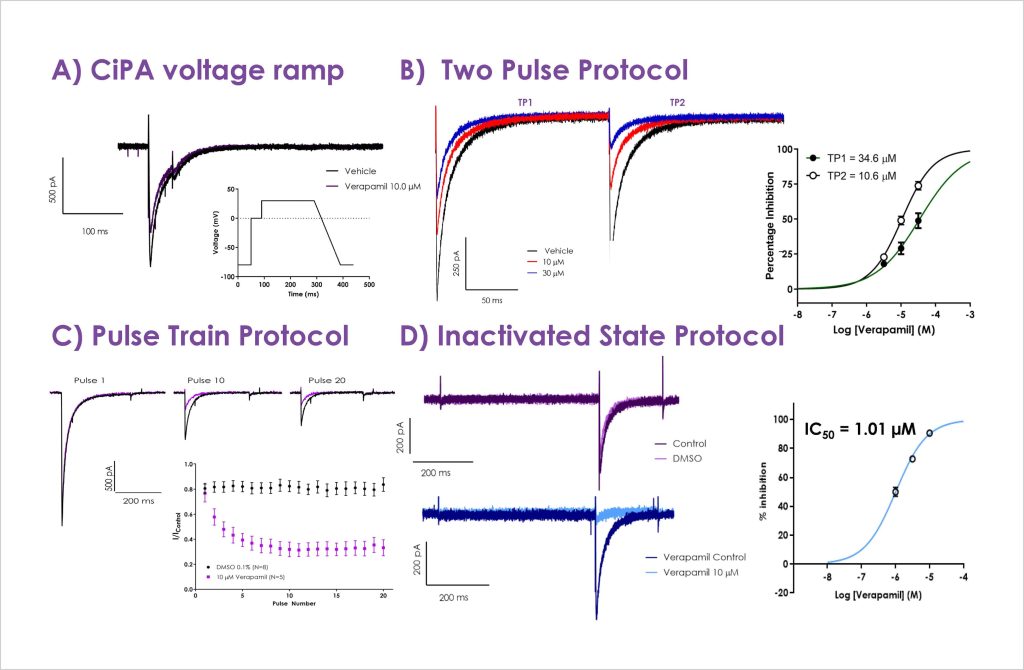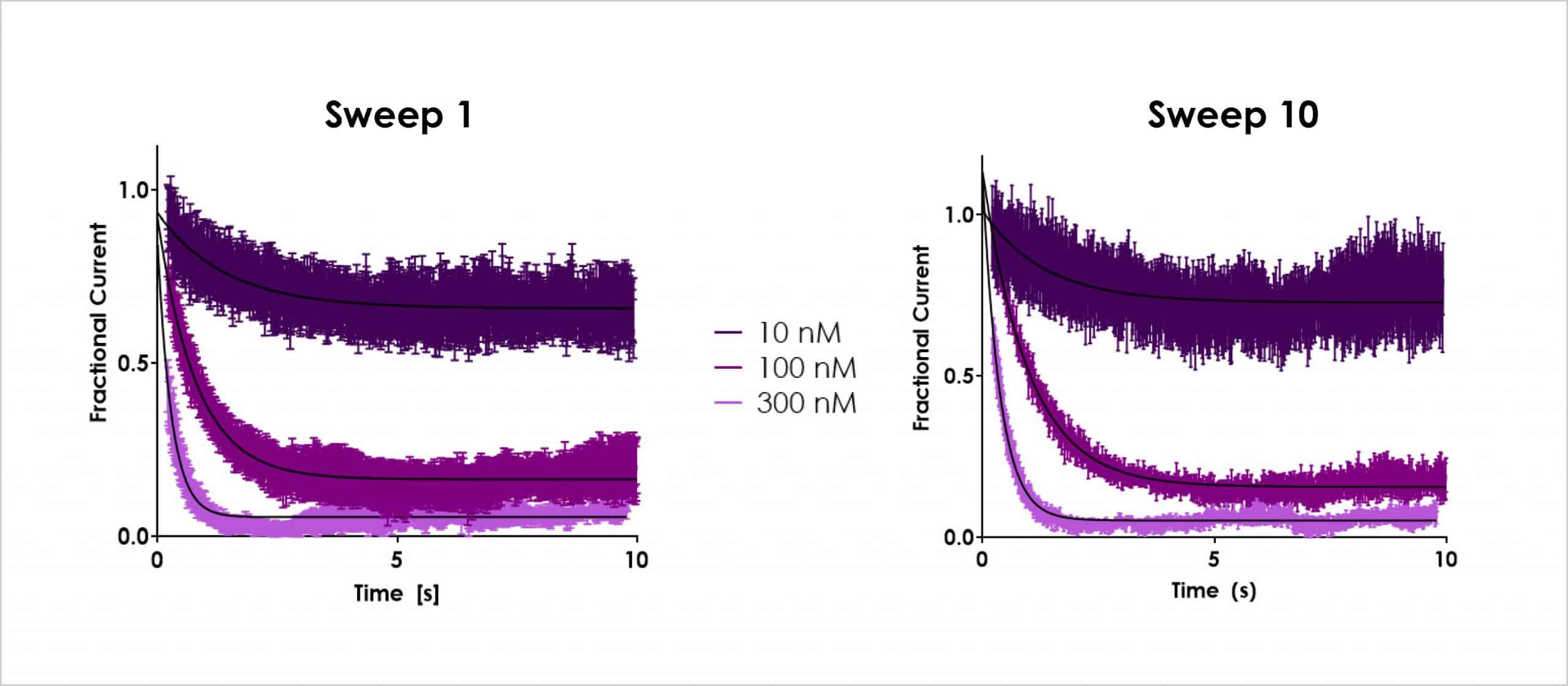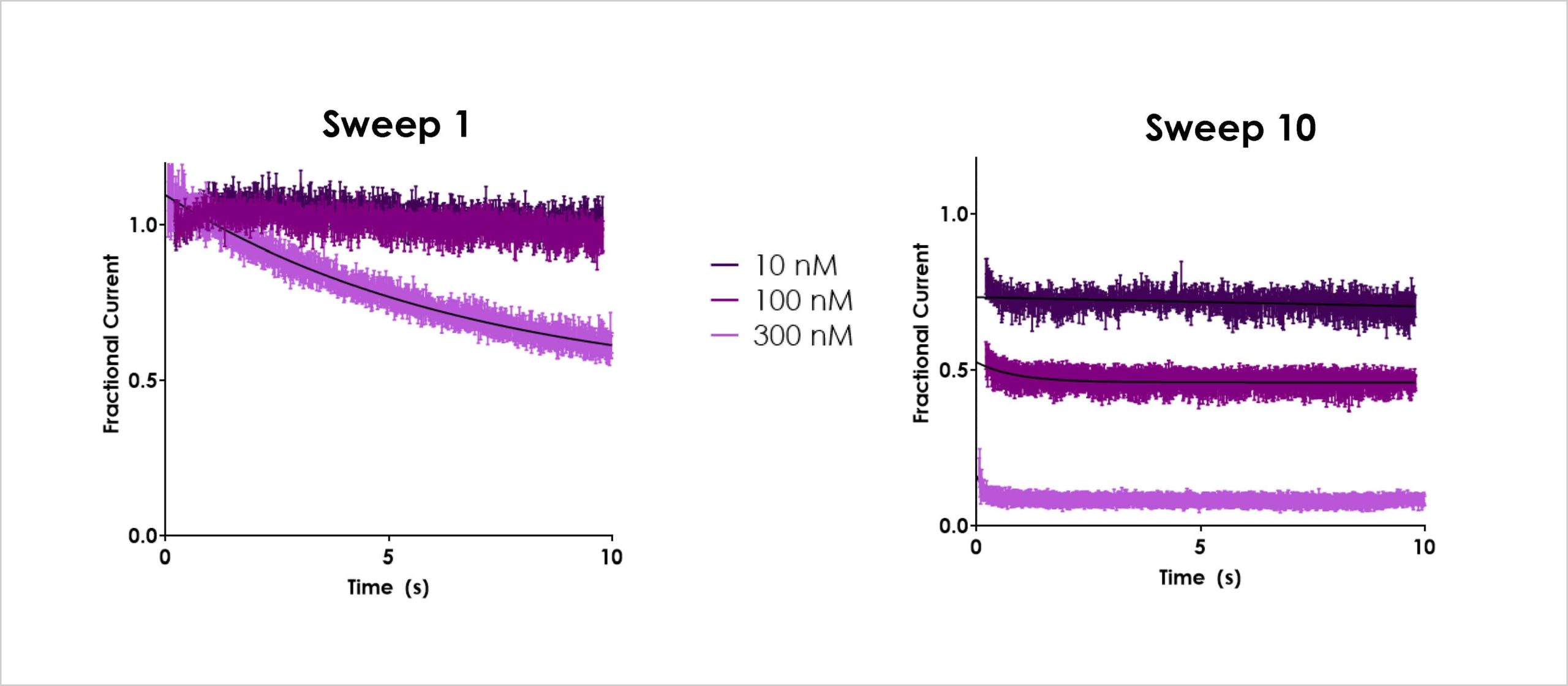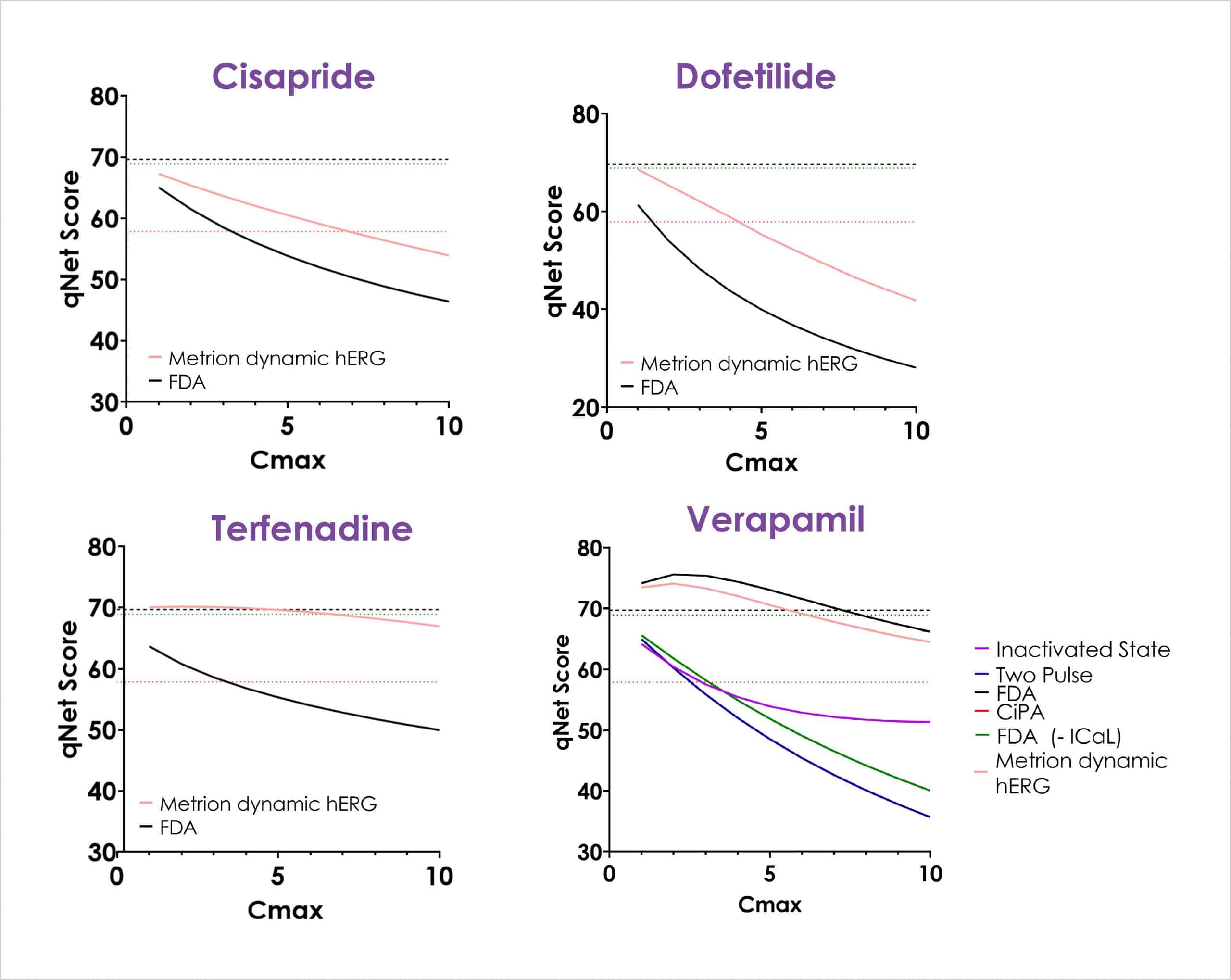Using new in vitro cardiac ion channel assays and in silico models to predict proarrhythmic risk with automated patch clamp data

Case Study
Case Study title
Using new in vitro cardiac ion channel assays and in silico models to predict proarrhythmic risk with automated patch clamp data
Authors
Edward SA Humphries, John Ridley, Robert W. Kirby and Marc Rogers
- Metrion Biosciences Ltd, Riverside 3; Suite 1, Granta Park, Cambridge, CB21 6AD, United Kingdom
Introduction
The FDA’s Comprehensive in vitro Proarrhythmia Assay (CiPA) initiative is designed to remove the over-reliance on hERG data to predict human clinical cardiac risk⁽¹⁾, with recent results suggesting that inclusion of additional cardiac ion channels and assays (e.g. peak and late Nav1.5, Cav1.2, dynamic hERG⁽²⁾) improve risk predictions of in silico action potential models⁽¹⁾. The CiPA working groups currently use a mixture of manual and automated patch clamp (APC) platform data, but future CiPA drug screening will likely rely on APC data.
We show that high quality APC data from CiPA cardiac assays can accurately predict proarrhythmic risk of some, but not all, drugs in FDA in silico models, however, two areas require improvement:
- The potency of CiPA compounds, such as verapamil, against Cav1.2 is influenced by the voltage protocol used and the state- and frequency-dependence of Cav1.2 channel inhibition.
- Compounds exhibiting slow binding on-rates underperform in certain assays, including our current dynamic hERG assay.
Materials and Methods
In vitro cardiac ion channel assay
CHO or HEK cells stably expressing cardiac ion channels were cultured and harvested using optimised protocols. All data were generated on the gigaseal QPatch48 system (Sophion).
In silico modelling
Potencies for compounds from each CiPA risk category either generated using Metrion’s APC assays or using FDA’s manual patch clamp were applied to the official FDA optimised dynamic O’Hara-Rudy (ORd) model⁽³⁾ which was downloaded from the FDA’s Github site and used on Rstudio and qNet scores and threshold values generated⁽¹⁾.
In vitro hCav1.2 assessment
One of the largest differences in compound potencies between automated and manual patch clamp data has been for Cav1.2⁽⁴⁾, with these values being key to “rescuing” the predictive risk of compounds such as verapamil. Previous publications and in-house experiments showed use-dependent and inactivated state preference for verapamil inhibition of Cav1.2⁽⁵⁾, therefore, we assessed a number of voltage protocols to determine whether low micromolar potency could be determined.

(A) The CiPA step ramp protocol showed that 10 µM verapamil had minimal block. (B) A two pulse protocol was used to confirm use/inactivated state preference. (C) Use of a 20 pulse 1 Hz train showed a use dependent effect. (D) A combined inactivated and use dependent block protocol revealed the strongest inhibition by verapamil.
Dynamic hERG assay
Metrion has previously optimised and validated the Milnes protocol on the QPatch 48 to yield acceptable stability in current amplitude and kinetics⁽⁶⁾. This has allowed the evaluation of a small number of challenging compounds (e.g. slow on-rate) using a composite concentration response assay format (Figure 2).

(A) The Milnes protocol consists of 9 stages, each 250 seconds long. Depolarising stages (1,3,5,7,9) consist of 10 depolarisations for 10 seconds each with a sweep-to-sweep interval of 25 seconds. A single concentration of compound is applied during stages 8 and 9. (B) Fundamental to reliable kinetic fitting is a stable baseline, as shown in Metrion’s optimised assay conditions suitable for compound testing.
Trapping of compounds in the hERG channel was determined for cisapride, dofetilide, terfenadine and verapamil. An example of a non-trapped (cisapride) and a trapped (dofetilide) compounds are shown in Figure 3 and the trapping parameter (vhalf-trap) determined was compared with published literature values (Table 1).
Cisapride (non-trapped)

Dofetilide (trapped)

Normalised concentration response data for cisapride and dofetilide show the ability of the QPatch Milnes protocol assay to discriminate between the minimal trapping of cisapride and the high degree of trapping of dofetilide.

The vhalf-trap parameter (the membrane voltage at which half of the drug-bound channels are closed) was calculated using the FDA’s optimised dynamic O’Hara-Rudy model using Metrion’s automated patch clamp (APC) QPatch data and compared to FDA published manual patch clamp data (MP).
In silico modelling
Combining Metrion’s dynamic hERG data and more physiological Cav1.2 potency values, we assessed the utility of fully automated patch clamp data for cardiac safety assessment using the most recent FDA published in silico cardiac action potential model (Figure 4).

Comparisons of the qNet score as a function of Cmax were determined for cisapride, dofetilide, terfenadine and verapamil using the FDA test set data (manual patch) alone (blank line) or when Metrion’s dynamic hERG APC data was substituted (pink line). The choice of voltage protocol used to determine verapamil potency affected the qNet score.

In silico prediction of qNet proarrhythmic scores from automated patch clamp (APC) or manual patch clamp data (MP).
Conclusions
- Cav1.2 potency for verapamil was increased 30-fold using use-dependent and inactivated state voltage protocols, to better align with manual patch clamp data. Further work is required to improve this protocol for CiPA.
- Metrion exploited its dynamic hERG assay to assess the utility of APC data to predict proarrhythmic risk. hERG kinetic data align with manual patch recordings, but some compounds still exhibit small potency shifts, potentially due to slow or incomplete block during the 10 sweep protocol (Figure 2).
References
- Li et al., (2017). Circ Arrhythm Electrophysiol. PMID: 28202629.
- Milnes et al., (2010). J Pharmacol Toxicol Methods. PMID: 20172036
- Dutta et al., (2017). Front Physiol. PMID: 28878692
- Li et al., (2019). Clin Pharmacol Ther. PMID: 30151907
- Kuryshev et al. (2014). Assay Drug Dev Technol. PMID: 24579774 (6) CiPA hERG
- Milnes kinetic assay on QPatch. metrionbiosciences.com/application-reports/


Let’s work together
What are your specific ion channel and assay needs?
If you have any questions or would like to discuss your specific assay requirements, we will put you directly in touch with a member of our scientific team. Contact us today to discover more.
